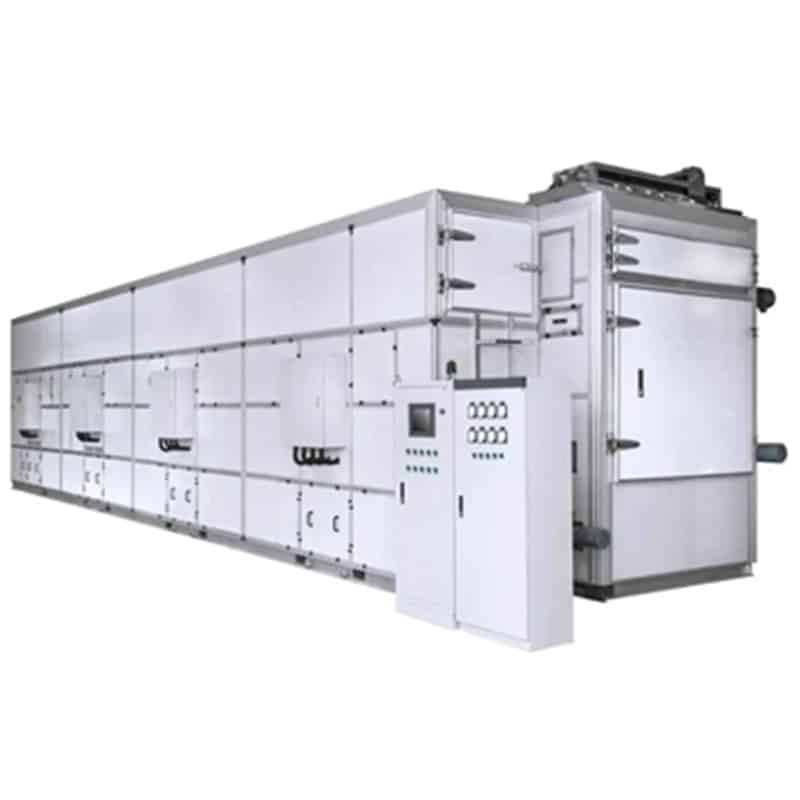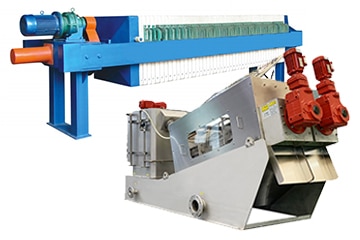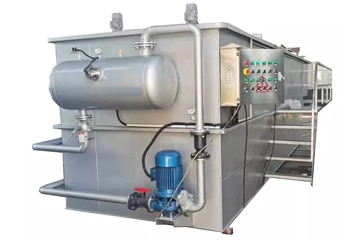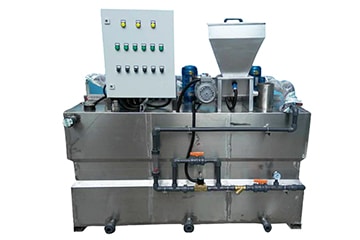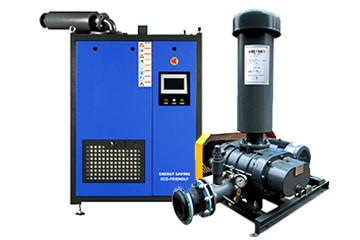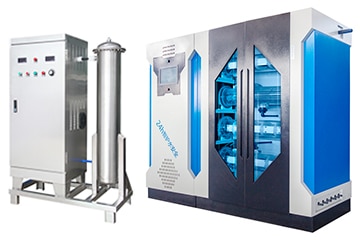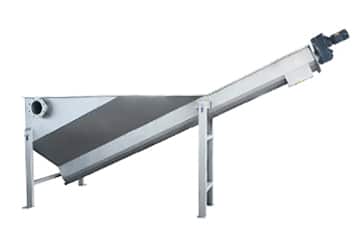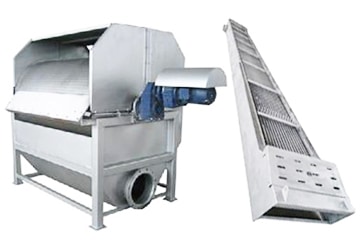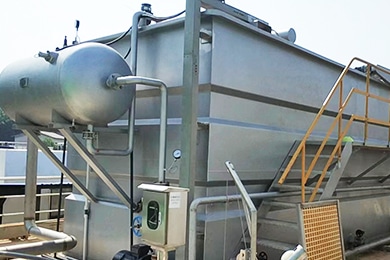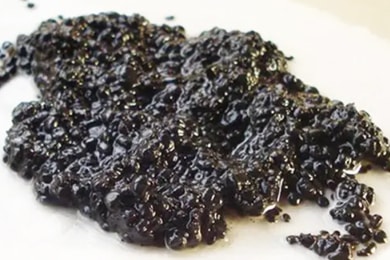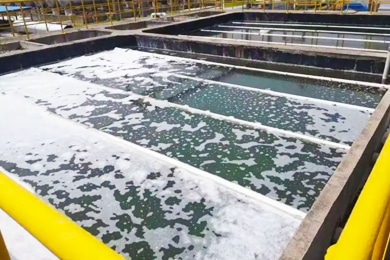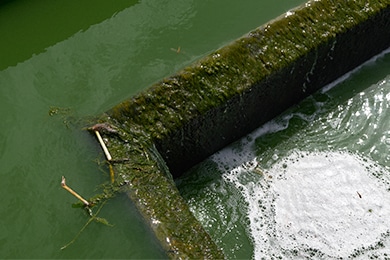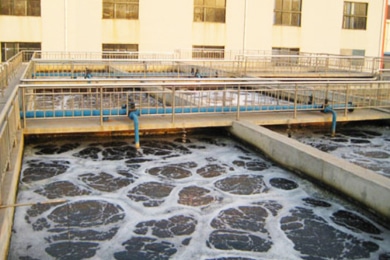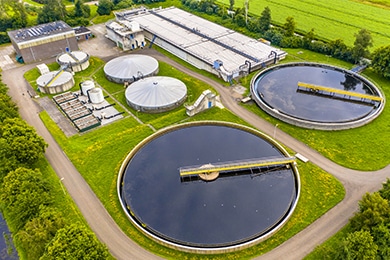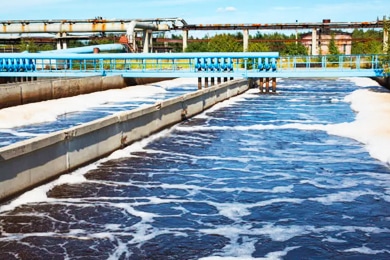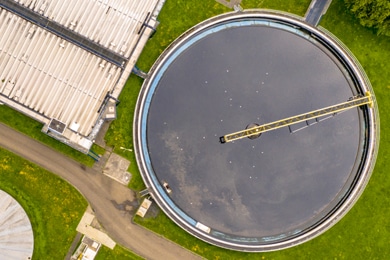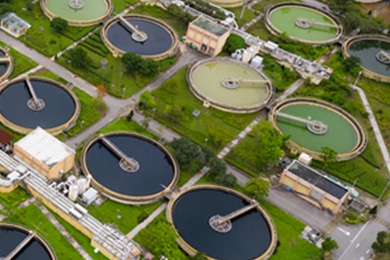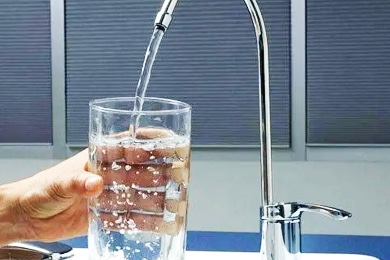Low Temperature Sludge Dryer
Low temperature sludge drying system is using low temperature heat pump dehumidification principle, using convection hot air drying method for dewatering and drying reduction of wet material sludge, the whole system is fully enclosed design, no heat loss of drying hot air. No overflow of odor, no need to install expensive deodorization system, it can be installed directly in the plant area for centralized sludge disposal, and the condensate section discharges directly without secondary treatment.
Closed system design combined with heat pump heat recovery technology, no heat loss, the system works better energy efficiency, different from the continuous moisture dissipation and heat dissipation, continuous high temperature heating open type drying equipment.
How the low temperature sludge dryer works?
Low temperature sludge dryer uses refrigeration system to cool down and dehumidify the wet air from the drying room, while recovering the latent heat of moisture condensation to heat the drying air again, which is a combination of dehumidification (dehumidification drying) and heat pump (energy recovery), and is the recycling of energy in the drying process. The working stages of low temperature sludge drying system are mainly divided into four as follows.
- Preheating stage: sludge dryer just started to be dried material problem is very low, in the material and hot air contact, sludge dryer hot air first of all the temperature of the material and moisture temperature, so that it reaches the temperature of moisture vaporization. This stage is characterized by the material has zero agile increase to a certain value, the time is very short.
- Constant velocity stage: As the heat continues to transfer, so that the sludge dryer moisture and material surface issues continue to rise, but the surface of the moisture due to the stem of vapor pressure to the air vaporization diffusion, will make the material surface issues reduced. After the evaporation of the surface moisture, the internal moisture of the sludge dryer material will continue to flow like the surface, so that the surface remains moist, and the rate of drying will not change. This stage is characterized by the moisture has material vaporization, sludge dryer material inner layer of moisture to its surface diffusion speed is very agile, the material surface always remains moist, drying speed is unchanged and has “big value”.
- Reduction stage: Because the speed of water outflow inside the sludge dryer material is lower than the speed of gasification on the surface, then the surface of the material will be partly in dry form, so the amount of water gasified is reduced. The characteristics of this stage are the same as the second stage, the water is surfaceized by the material, while the wet surface is gradually reduced, and the speed of drying is in uniform landing.
- The material reaches the equilibrium water content or critical water content stage: As the speed of drying decreases, the central temperature of the sludge dryer material surface dry will keep rising, heat transfer to the interior, so that the evaporation surface moves to the interior, the water becomes steam and then diffuse flow to the surface. Firstly, the water content in the sludge dryer material is getting less and less, and the resistance encountered by the water flow is getting bigger and bigger, and the drying speed is landing quickly, secondly, the water contained in the sludge dryer material is balanced with the temperature of the air: that is, the water content of the material has reached the balanced water content under certain conditions, at which time the drying speed is zero, and the drying process is completely finished.
Features
- Strong drying capacity
- No odor emission without deodorization
- No heat loss 100% heat utilization
- Lower operating costs
- Low temperature is safer without dust hazard
Applications
- Municipal sludge
- Industrial sludge
- Printing and dyeing
- The paper
- electroplating
- chemical
- leather
- The pharmaceutical

